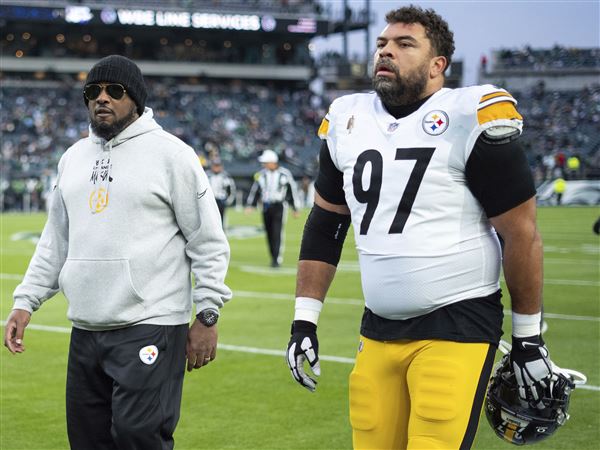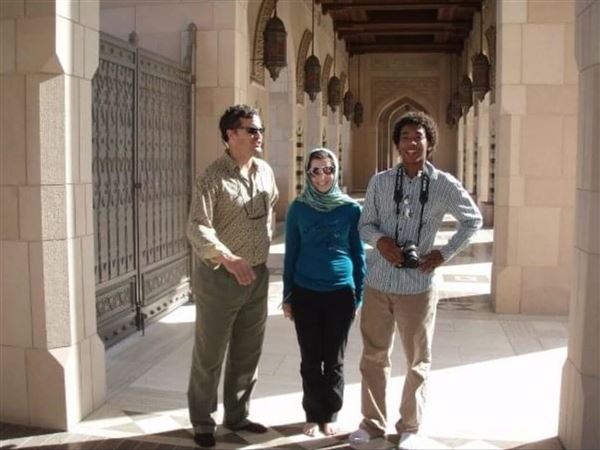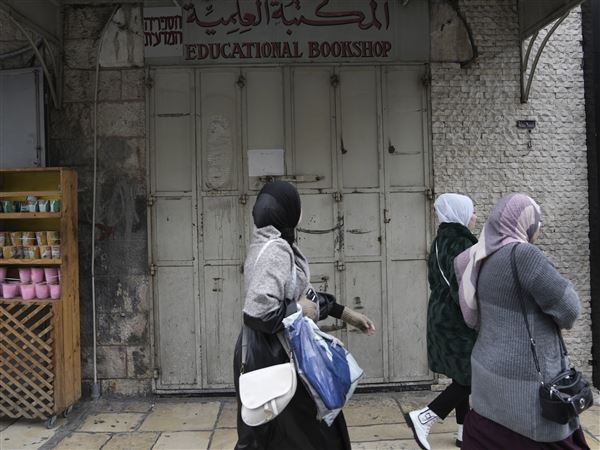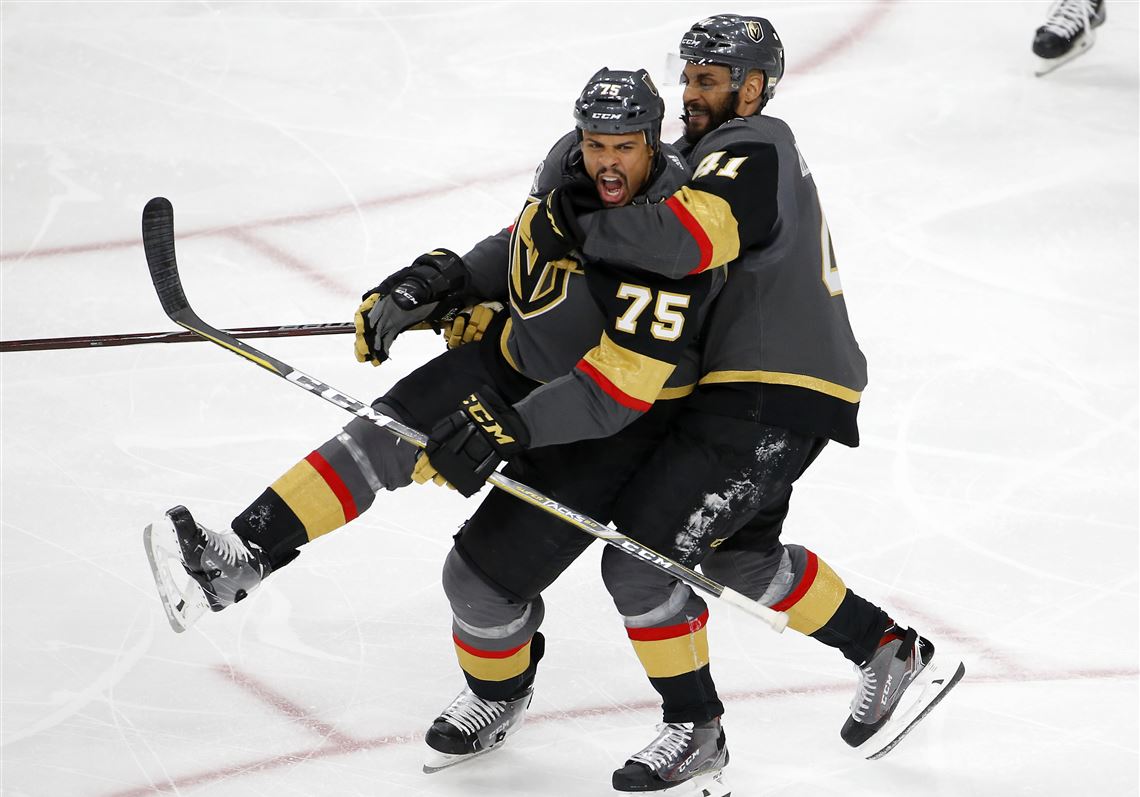It’s not like Jim Rutherford required a reminder when it came to one of the items on his offseason to-do list, but the Penguins general manager got it anyway during Game 1 of the Stanley Cup final on Monday.
Vegas’ fourth line stole the show — and what a show it was — by accounting for half of the Golden Knights’ goals in a 6-4 victory over the Washington Capitals at T-Mobile Arena, including one by ex-Penguin Ryan Reaves and two from Tomas Nosek.
Getting scoring from the fourth line was one of the things that made the Penguins’ Stanley Cup-winning teams of 2016 and 2017 so special. It was also one of the reasons the Penguins didn’t make it out of the Eastern Conference semifinals this spring.
“I think we will probably look at getting a little more balance throughout the whole lineup,” Rutherford told the Pittsburgh Post-Gazette last week when asked about his offseason priorities. “We want to make sure we have the four lines that can produce. We may be able to do that from within, depending on how it gets structured.”
Nobody knows about the importance of fourth-line offense more than Vegas after a key victory in Game 1.
The three fourth-line goals actually came in succession, a natural hat trick for the group during a decisive third period.
Reaves made it 4-4 at 2:41 with an unassisted goal from in front, his second in as many games after notching the game-winner in Game 5 of the Western Conference final.
Nosek nudged Vegas in front for the final time at 9:44, finishing a terrific pass from defenseman Shea Theodore, and tacked on an empty-netter to put Washington away for good at 19:57.
“We’re keeping things simple, working hard and winning battles,” Reaves told reporters. “We’re comfortable playing together, and we’re always looking for each other, talking out on the ice, and it’s leading to scoring chances.”
Rutherford couldn’t have possibly watched Game 1 and thought that keeping Reaves — after losing him in the pre-deadline deal that netted the Penguins Derick Brassard — would’ve fixed the problem. While Reaves has been an effective player in Vegas, he hardly has a track record of proven offense.
However, for the better part of the postseason, Vegas has received positive contributions from this group, including a huge goal from Nosek in Game 4 of the Western Conference final, one that stymied Winnipeg’s momentum just 43 seconds after the Jets had scored.
That’s the sort of stuff Cup-winning teams get from their fourth line. Top-end offensive players drive the train, whether we’re talking about Sidney Crosby, Evgeni Malkin, Jonathan Marchessault or William Karlsson, but key goals from different sources can routinely provide a boost.
Two years ago, the Penguins got a combined nine goals in the postseason from Tom Kuhnhackl, Matt Cullen and Eric Fehr. Kuhnhackl, Cullen, Scott Wilson and Carter Rowney dropped off a little last season but still produced a total of six goals.
The Penguins got nothing even close to that this spring.
Fourth-line center Riley Sheahan produced one goal in 12 games, while Zach Aston-Reese. Rowney, Kuhnhackl and Conor Sheary failed to find the back of the net. Rust scored three times, although one was an empty-net goal.
“Until the last few games of the playoffs, we couldn’t get comfortable with our fourth line,” Rutherford said. “I don’t think that had anything to do with one individual – Ryan Reaves or any one person who played on the line. But we couldn’t get a fourth line that could create enough.”
By the end of the postseason, Sullivan was deploying Brassard between Sheary and Rust. It was effective, sure, but the Penguins were pretty much stacking the deck with players who are paid salaries commensurate with second- and third-line production.
Reaves, Nosek and Pierre-Edouard Bellemare — a responsible, safe center similar to Sheahan — are not paid much at all. Together, they command just $2,162,500 or less than Sheary made himself in 2017-18.
Having a fourth line that produces something, and does it on the cheap, would give Rutherford the flexibility to appropriate money elsewhere, sort of what he’s done by leaning on young wingers while extending Brian Dumoulin and Justin Schultz, spending $9.5 million on goaltending for a season and bringing in Brassard.
In 2018-19, the task is clear: Get more production from that group. Sheahan, a restricted free agent, will likely return as the fourth-line center. If Daniel Sprong makes the team and occupies a top-nine spot, that could allow Rust to slide down the lineup and add speed and a splash of offense. Some growth will be expected from Aston-Reese in his second NHL season.
Other internal options exist, too, whether that’s Jean-Sebastien Dea, Teddy Blueger or Adam Johnson, although those fixes are probably not immediate. The Penguins simply need to get more from the players they have on the NHL roster or look to supplement with a veteran who could come cheap, perhaps even bringing back Chris Kunitz.
However the Penguins do it, whether they use young players, old ones or the Eastern Bunny, Game 1 of the Stanley Cup final provided the latest bit of evidence that it’ll be absolutely necessary to get more from that group.
Jason Mackey: jmackey@post-gazette.com and Twitter @JMackeyPG.
First Published: May 29, 2018, 12:05 p.m.



















